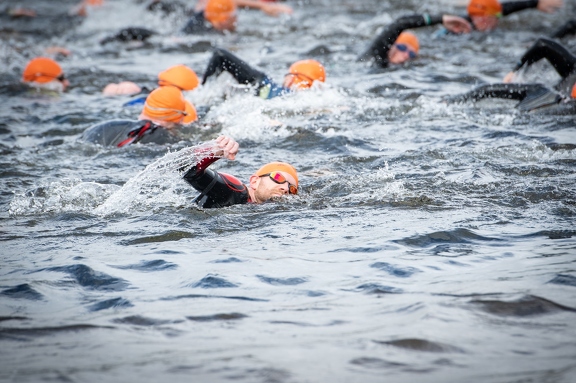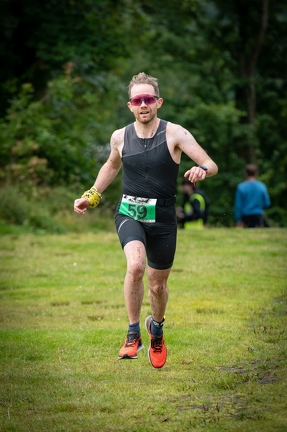It was an early start and a rather dreary day when the time came for my first triathlon. Doing one of these had been on the cards for a while; I’d agreed to do one sometime before COVID struck, but without a great deal of confidence. At the time I’d regarded swimming two lengths of the university pool without stopping for breath and to recover to be a good day, so the notion of heading out into a cold loch to swim 750m was not immediately inviting. I did, however, resolve to correct that deficiency, and by last winter I could get up to four lengths without being completely exhausted, and I was actually swimming with my head underwater most of the time without panicking.

By March I bit the bullet and entered the University’s aquathlon, managed to swim its 400m (indoors) without making a complete fool of myself, and so plans were made, and I managed to talk Magnus into entering the Loch Lomond Sprint Tri (or he may have talked me into it, I’m not sure at this stage). I bought a wetsuit in earnest, though it would be May before I was prepared to toe the waters of the watersports centre on the Glasgow canal early one Wednesday morning. By today I’d put in a fair few hours of swimming, and a decent number of open water swims. I was nervous, but confident the distance wouldn’t be an issue as I bundled myself, three sports’ worth of clothing and equipment, and a mountain bike onto the early Balloch train at Hyndland.
I met Magnus and we set ourselves up in transition before waiting around for a while. It was too humid to don a wetsuit just yet.

The time came, though, and the swim started along the loch, parallel to the shore as a mass start. I was happy, as I slowly swam along, to be able to see the turnaround buoy off in the distance, and felt like I was making good progress; I couldn’t see anyone coming the other way. It turned out there was a reason for this. The buoys I’d been spotting marked the half-way point to, well, the half-way point. I did make it fairly happily to the turnaround, but coming back the water was shallower and rougher, and a few waves took me unexpectedly. I quickly found myself panicking. I flipped onto my back in an attempt to calm my breathing, and was able to cling to the side of one of the safety kayaks for what felt like an eternity (but would later transpire to have been around 30 seconds) before I was able to carry on, albeit more slowly and even less elegantly than before.

It was a considerable relief to (literally) hit the slipway again, climb out, and run to transition. This took a bit longer than I’d hoped, and it took longer to remove my wetsuit than I think I’d ever taken before.
The bike leg was largely straight-forward, and started slowly across grass before going onto a muddy path. I’d underestimated how hard this would be, having never raced on a mountain bike, and while there were no very technical sections it was less forgiving than I’d bargained on. It took me over an hour to complete less than 20 kilometres of riding, and I was pretty broken by the time I finally returned, caked in mud, to T2.
I’d anticipated the runstarting slowly, and so wasn’t taken unawares by that at least. By the second lap my legs had found their correct rhythm, and I ended up overtaking Magnus just past the third kilometre, and made a fairly reasonable time of one leg at least. I crossed the finish line relieved, and conscious that my training had not really been sufficient.
I later discovered that the swim course was closer to 1km than it was to 750m; if that’s accurate it would be the longest continuous swim I’d done to date. The medal for the event was, unusually, made of porcelain.